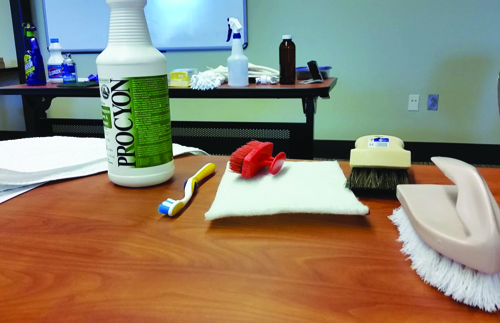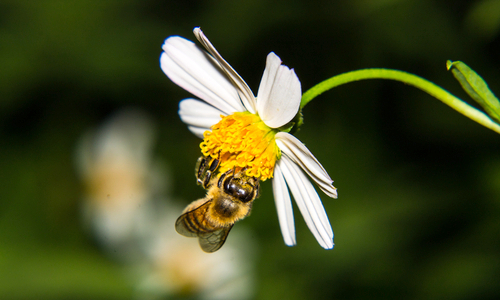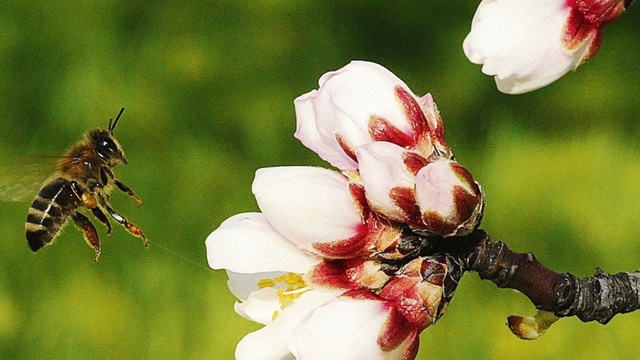
By Niki Cleary, Tulalip News
It’s easy to fall prey to the advertising. A sparkling home, the scent of a sea breeze drifting across the living room, not to mention the image of your bizarrely clean children and dogs frolicking as you take cookies from your spotless oven. The fact is, it’s a myth. The images are clever marketing. A play on our childhood memories and a lifetime of conditioning about how to properly complete domestic chores that hooks us into buying toxic cleaners that not only wreak havoc on our health, they actually make our house dirtier!
Denise Frakes has owned and operated cleaning companies for 24 years, she explained, “There’s a reason most of our fragrances are ‘seabreeze, mountain mist,’ all these things feed our [idea] of hearth and home, except they don’t. Our sense of smell is in the mid-part of the brain where our memories and emotions are. A lot of times it’s hard to let go of products we’re emotionally connected to.”
It helps if you first consider that most cleaning products designed for your home are pesticides.
“Anything that kills a living organism, is a pesticide,” Denise pointed out. “Be careful, we are living organisms. Have you ever cleaned your house and had this scratchy throat, a headache, or you just feel tired?”
It’s not just because you don’t like cleaning.
She went on, “Instead of feeling vitalized because we’ve done something physical, we don’t feel well. What happened? We’re mixing products all the time. Say I’m in the shower and use a product called ‘Kaboom’. I spray it, breathe it in, it gets on my skin. Then maybe I use my window cleaner with ammonia, and some of it also lands on me, the glass, and some on the acrylic floor. Now I’m in this tiny area, with poor ventilation and I’ve created a toxic gas.”
In addition to the concern of mixing chemicals, Denise said that one of the goals of cleaning is to leave no residue. Denise and her husband, the owner/operators of Blue Sky Services, employ a system that focuses on prevention then escalates to the use of what she calls ‘restorative’ cleaning products, things like bleach.
“Cleaning is not about adding on, it’s about removing. We start with residue free, or green cleaning, because when you’re done cleaning the only thing left should be the [surface]. ”
But cleaning products make life so much easier, right? I’ve seen the commercials, spray that stuff and little bubble cartoons come out of nowhere and leave behind sparkles and freshness. Turns out that’s not exactly accurate, most cleaning products leave behind a residue that attracts dirt if it’s not removed.
“The job of cleaners is to attract soil, so they leave behind a residue which makes things re-soil faster,” Denise explained.
Prevention is always better than cleaning, she pointed out. She pronounced that a good entry rug is the first line of defense. Taking off shoes as you enter the house is another strategy to keep dirt out.
“The premise of my cleaning is always, is there a way we can prevent a soil? If you have a commercial entrance rug and take off your shoes, you’ll minimize 76% of all soils that come in the door.”
When you do have to clean, the best ingredient is elbow grease, and plenty of it.
“We are masters of breaking surface tension in our cleaning company, because that’s where the cleaning happens,” Denise illustrated by wetting a cloth and scrubbing briskly.
“I use a two-towel method, microfiber cloths are great technology,” she added. “A good microfiber will gather 99% of the germs. They grab a hold of the soil, we don’t need to kill germs, just remove them. I clean with a microfiber, then buff dry with a terry cloth or other non-lint towel.”
Dish soap is one of the products Denise is fond of using. Because it’s excellent at breaking surface tension, is safe and a little can go a very long way.
“I use it in showers, counters and floors,” she said. “Because it’s high bubbling, you can use a really diluted product. It’s a great cleanser to use, then rinse and dry and it’s not in the air.”
In line with her mildest means cleaning philosophy, Denise encourages the use of vacuums, especially those that use HEPA filters. HEPA filters remove very fine particles from the air.
“There’s a lot of stuff in our dust that isn’t healthy,” she explained. She urged people to consider opening their windows, both to let in fresh air and to remove moisture, an often forgotten danger to indoor air quality.
“When you live in a house it should be the safest, healthiest place, but most homes have 25% more contaminants than outside,” said Denise. “Air purifiers are great, but clean your filters on a regular basis and maintain them well. I recommend that every house has a hygrometer, a relative humidity measurement tool.”
Ideally, indoor air should contain 30-50% moisture, when it’s above 60% the humidity provides a perfect environment for dust mites and mold.
“If you’re cleaning or working in the kitchen or taking a shower, open a window and turn on the ventilation,” she encouraged. “The exhaust fans remove contaminants and the windows bring in fresh air.”
Quick review time: in order to reduce dependence on cleaning products you should practice prevention, use area rugs and stop dirt at the door. Next, clean early and often using the mildest means possible, preferably water and washcloths followed by drying to prevent water spots and dirt from settling into the droplets. If you have to use a cleaning product, make sure that you increase the ventilation and open the windows.
Remember, you should feel better, not worse, after cleaning. For more tips on green cleaning you can follow Denise’s blog at www.dfbluesky.com.







 Seeking to nullify the Sixth Circuit’s ruling in National Cotton Council v. EPA and the resulting general permit, sections 12323 and 100013 amend CWA to exclude pesticides from the law’s standards and its permitting requirements. Known as the National Pollution Discharge Elimination System (NPDES), CWA requires all point sources, which are discernible and discreet conveyances, to obtain either individual or general permits. Whether a point source must obtain an individual or general permit depends on the size of the point source and type of activity producing the pollutants. Regardless of whether it is a general permit or individual permit, an entity cannot pollute without a permit and in most cases can only permit in the amounts (called effluent limitations) and ways prescribed in the permit.
Seeking to nullify the Sixth Circuit’s ruling in National Cotton Council v. EPA and the resulting general permit, sections 12323 and 100013 amend CWA to exclude pesticides from the law’s standards and its permitting requirements. Known as the National Pollution Discharge Elimination System (NPDES), CWA requires all point sources, which are discernible and discreet conveyances, to obtain either individual or general permits. Whether a point source must obtain an individual or general permit depends on the size of the point source and type of activity producing the pollutants. Regardless of whether it is a general permit or individual permit, an entity cannot pollute without a permit and in most cases can only permit in the amounts (called effluent limitations) and ways prescribed in the permit.


